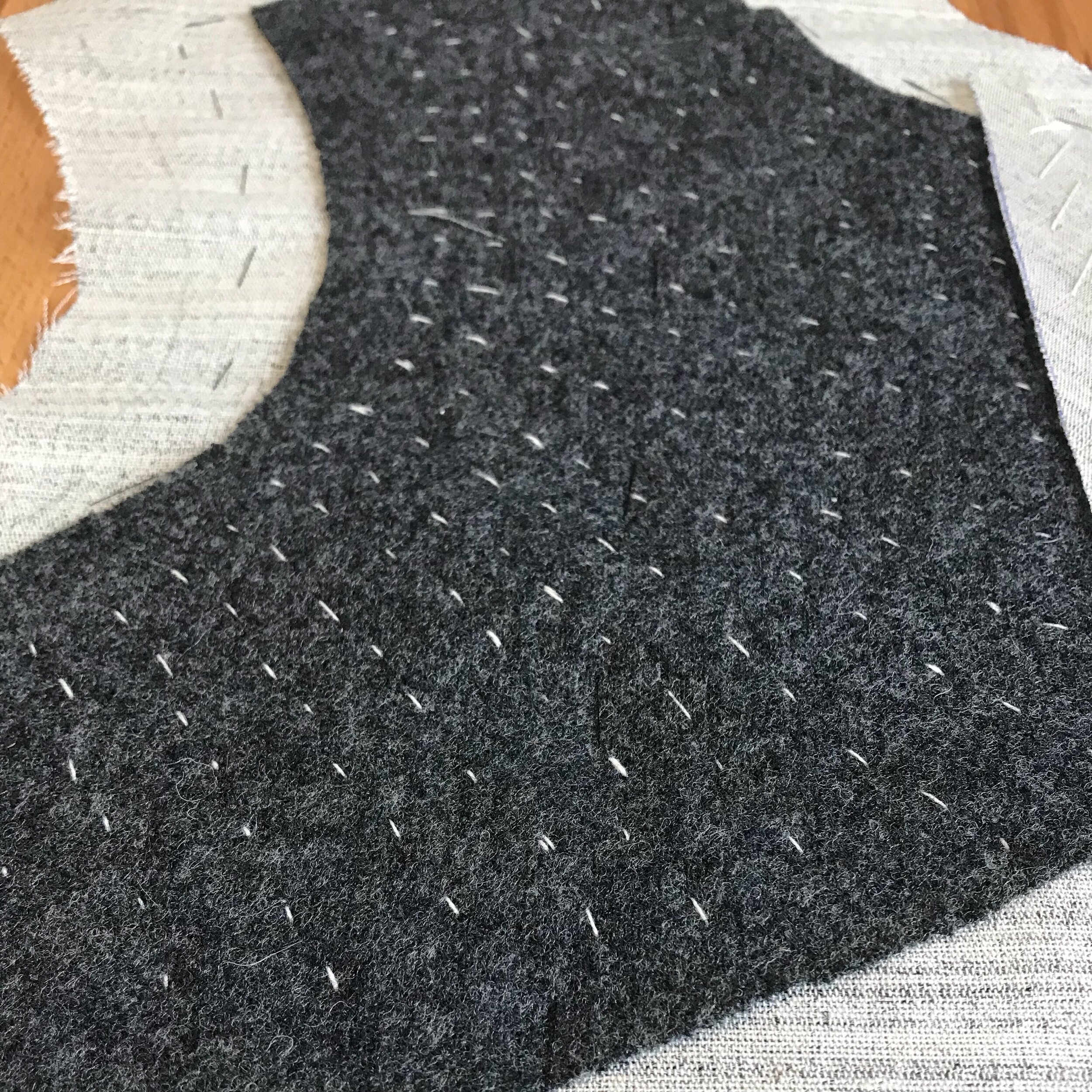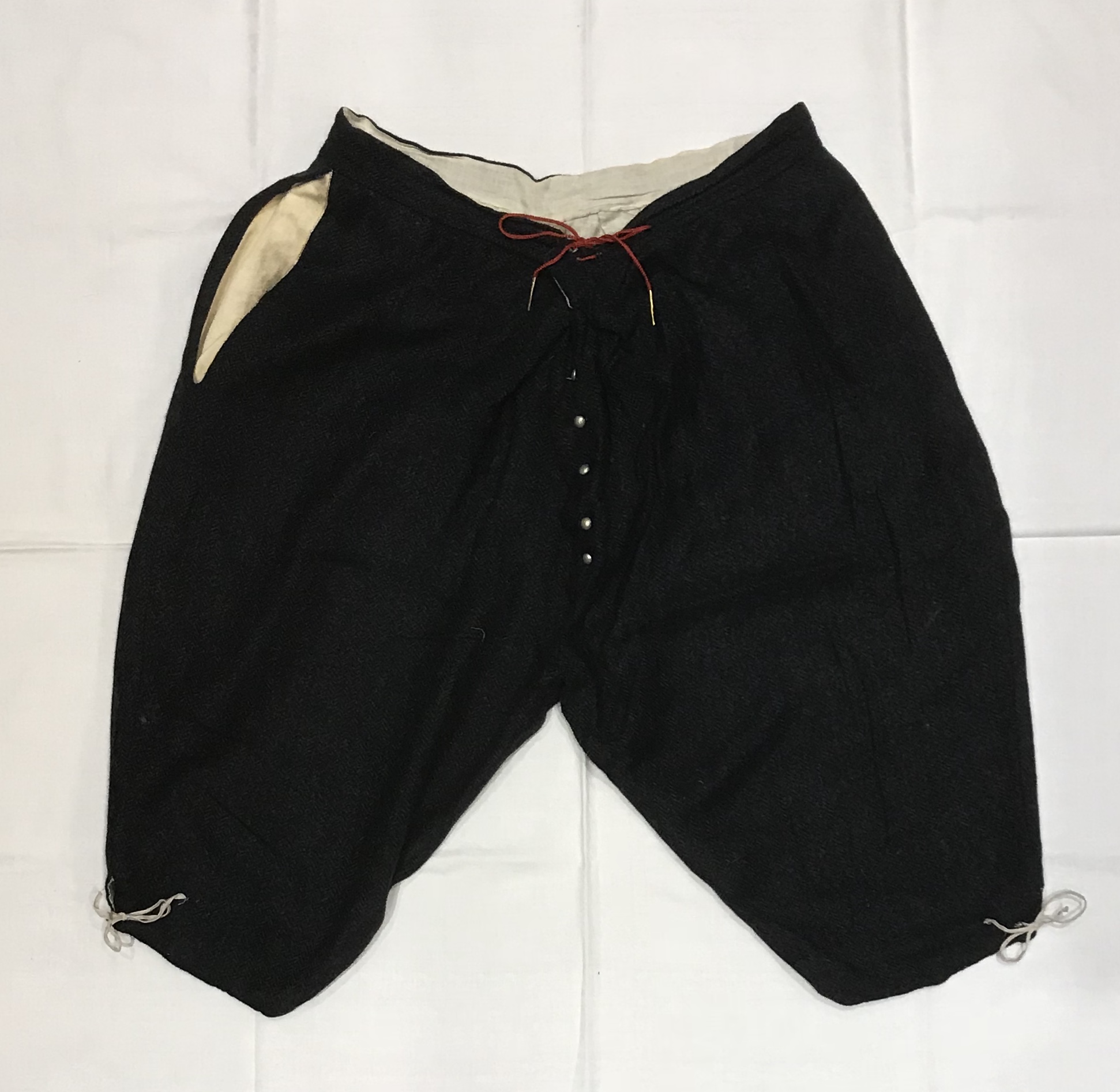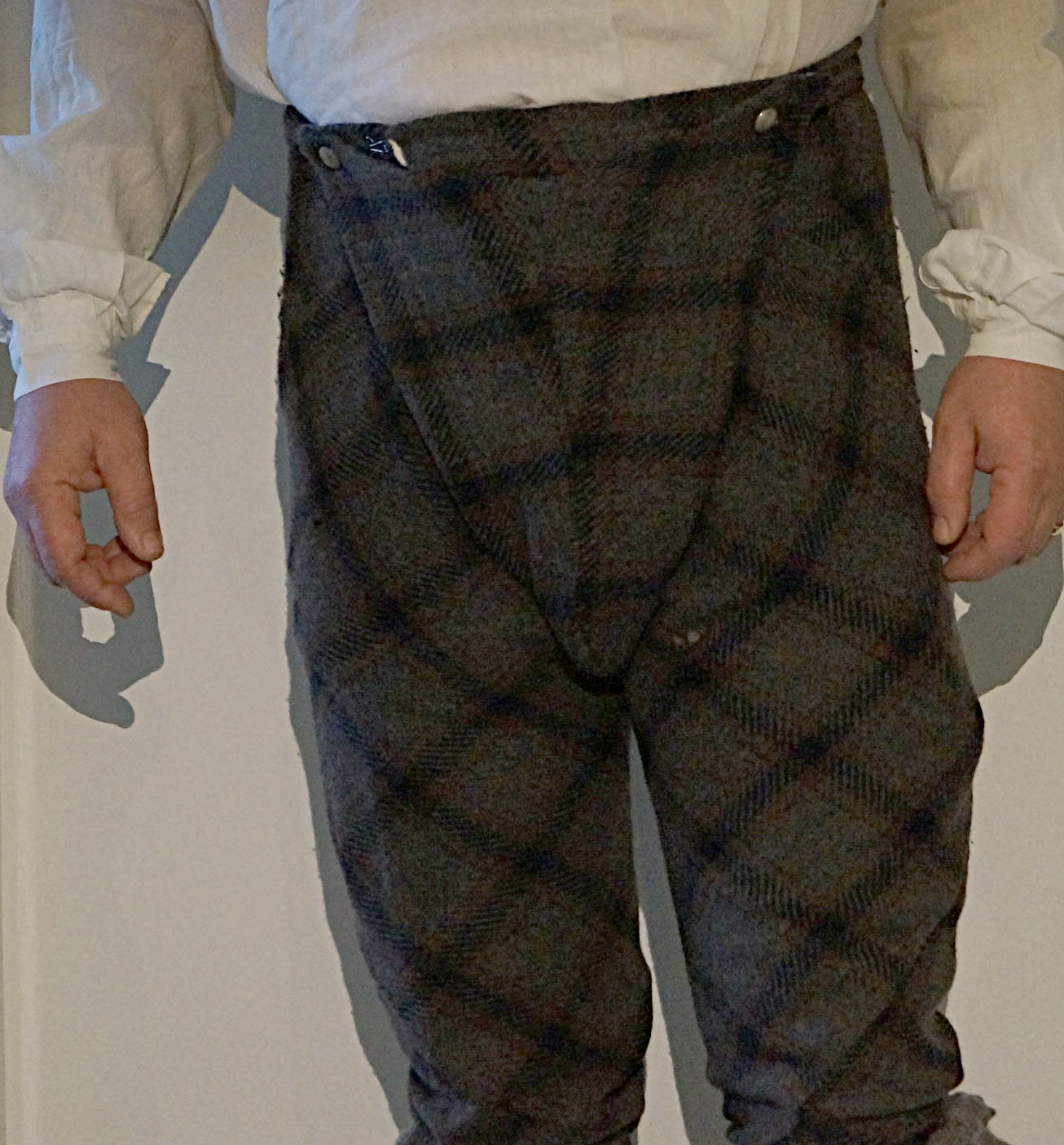New in! Natural hodden grey wool from British Wensleydale and Loaghtan sheep. Ideal for coats and breeches. Best modern match for “russet” wool.
Men’s and Soldier’s clothing in the 17th Century was based on social rank as much as current wealth. However, almost every man wore the same basic items and layers but with very different quality of cloth and construction. The key items worn by all men were:
Prince Maurice’s Regiment of Dragoones with kind permission of Chris Thomas
Shirt - a long linen shirt, often with a small stand up collar rather than a sewn in full collar.
Collar - an optional item often worn by more wealthy men, officers or gentlemen. Can be plain white linen or have lace on the edges
Doublet - this was a very structured and fitted item, worn all of the time (indoors and out). It would normally have a strip at the waist with hooks and eyes to support the breeches. Doublets are expensive items due to the tailoring needed to make them fit the individual well.
Breeches - in the early 17th century, breeches were fuller and shorter, looking very baggy and puffy. In the middle of the century around the Civil War period, the shape became slimmer down the leg but still very gathered at the waist. In the later part of the century, breeches became more fitted and narrow legged.
Coat (Soldier’s coat) - this was worn over the doublet for warmth outdoors. Because of the life led by Civil War soldiers, the coat is what is most often seen in drawings and paintings. Many re-enactors only use a coat during the summer, when a doublet and coat would be too warm. Most Civil War societies dictate the regimental colour of the coat but doublets can be any colour. The photo shows one soldier wearing a grey doublet under his red coat.
Hose - these are cloth socks/stockings. They may be knitted but in a fine knit not football or rugby socks. They may be made from fabric cut on the bias to allow for stretch.
Cloak - only used for travelling, cloaks are more common in re-enacting than paintings of the time. Alternatives are a doublet and coat together or a Cassock.
Hat - all men covered their head when outdoors, so a hat of some kind is essential
Shoes - sturdy leather shoes as people in 17th Century walked more than we do!
Properly Dressed can supply any of these items apart from the last two - shoes and hats.
Tailored Doublet
The doublet is a garment that varies in styling but is substantially similar in basic design across the early 17th century, through the 30 years war, the early settlement of America and the English civil war.
The doublets that we produce are highly tailored garments, unlike coats which are simple in structure. The doublets are what modern tailors call “full canvas” - they have a full interlining which is hand sewn to give the required shaping and structure to the doublet. This gives them the clean, sharp lines of a well made suit jacket but with the shape of a well made 17th century doublet. In the lower image is an example of the hand-stitching that forms the rounded shoulder shape or the curve in the collar. This cannot be machine sewn, so if you want the authentic look for your doublet, then it is more expensive than a coat.
Doublets can be made from silk, wool or linen and are normally lined in linen. Since they are very fitted items, at least one fitting will be required during the making process.
CORONA VIRUS: Any doublet made until after the current lockdown is eased will be made to measurements, posted and then adjusted as much as possible if the fit is very poor.
Linen doublet
Pad stitching in shoulders
Prices and Options
Part hand and part machine sewn doublet
From £350 - Deposit £100
Price depends on fabric chosen and styling details.
Hand sewn buttonholes
Add £6 per buttonhole
Please add 8 weeks to the current waiting time as an estimate of delivery date. Delivery date will be confirmed when the deposit is paid.
The Maldon Coat
Based on a conserved coat in the Colchester Museum, this pattern uses original tailoring time-saving techniques that cannot be replicated by machine stitching.
The outer wool broadcloth is not edged or hemmed but left raw. This is far more hard wearing that you would expect. The lining is attached to the outer by hand slipstitching or small, neat topstitching along the edges. It gives a much smoother and less bulky finish than machine hemming.
The fabrics are wool outer, linen or wool lining and canvas interlining. The colour can be to suit your regimental requirements but prices may vary depending on fabric costs.
See https://www.kategillconservation.co.uk/17thccoat for the conservators blog on the work on the original coat.
Thank you to Ian Dicker for publicising this find amongst members of the Sealed Knot. http://thegoodwyfe.blogspot.com/search?q=maldon
Prices and Options
Part hand and part machine sewn coat
£180 - Deposit £80
Hand sewn buttonholes
Add £6 per buttonhole
Please add 6 weeks to the current waiting time as an estimate of delivery date. Delivery date will be confirmed when the deposit is paid.
Simple Soldier’s Coat
This loose fitting soldier’s coat is from a pattern in Julian Tilbury & Stuart Reid’s booklet “Clothing of the English Civil War Armies”. It has many buttons down the front, large tabs and fold back sleeves. It does not have any lacing strips inside for holding up breeches, as these would be on the doublet worn underneath.
This coat is mostly machine sewn with limited options. The fabrics are wool outer, linen or wool lining and canvas interlining. The colour can be to suit your regimental requirements but prices may vary depending on fabric costs.
Prices and Options
Machine sewn coat
£130 - Deposit £70
Hand sewn buttonholes
Add £6 per buttonhole
Please add 4 weeks to the current waiting time as an estimate of delivery date. Delivery date will be confirmed when the deposit is paid.
Soldier’s Breeches
These simple, unconfined and tapered breeches are currently offered in Hodden grey and dark grey. Other colours on request to suit regimental needs or taste may affect the price.
They are based on an outline pattern from Julian Tilbury & Stuart Reid’s booklet “Clothing of the English Civil War Armies” but adapted by Matthew Gnagy’s pattern in “Modern Maker Volume 2”. They are very comfortable and can easily take hooks and eyes or lacing at the waistband to suit an existing doublet. There is a button fly and lacing holes/laces to close waist and knee openings.
The waistband is stiffened to allow for the modern practice of supporting them by friction not lacing. The pocket is a traditional deep bag made of chamois leather and let in on one side seam.
You will need a pair of garters or another way to hold up your stockings as these breeches will not do it. You can make these easily yourself, or select garters on the order form as an option for simple cotton webbing garters.
dark grey soldier’s breeches
hodden grey soldier’s breeches
Prices and Options
Machine sewn breeches with hand finishing and lacing holes
£110 - Deposit £45
Hand sewn buttonholes
Add £6 per buttonhole
Chamois leather pocket
Add £15
Pair of garters
Add £5
Please add 2 weeks to the current waiting time as an estimate of delivery date. Delivery date will be confirmed when the deposit is paid.
Scots or Irish Trews
CORONA VIRUS: It will not be possible to make trews in the current lockdown conditions. Trews require at least one fitting and cannot be adjusted once they are completed. Until further notice, no orders will be taken for trews to be made up. However, see our paper patterns section as you may be able to have them made to our pattern locally to where you live.
In Ireland, things can be preserved in the peat. One of these things appears to have been a bundle of clothes from a second-hand clothing trader who was carrying, amongst other things, trews. Called the Dungiven Trews, the pattern for these is from a 1961 archaeological report called “The Dungiven Costume” by Henshall, Seaby, Lucas and Connor. It was surmised by understanding the weave of the original plaid (tartan) cloth and matching cut seams on the original flat fabric piece. When made up they are very fitted, having been cut on the bias so that they cling. However, the fabric was cut to be as economical as possible with minimum wastage.
Trews are more similar to hose than to breeches and were worn by the Scots and Irish men, especially when riding horses. The seat is loose for movement but not baggy. The front closure of the original trews had rotted away, so we have added a simple flap closure similar to Tudor hose - not a codpiece just a slightly shaped flap.
The ends of the legs have a loop under the foot, hinted at in the original, which hold the calf sections down into the shoe or boot. The garters are to stop the looser top section from sliding down the calf, rather than to hold up the hose underneath.
To ensure the most unique and personal trews, we suggest that you look for and choose your own fabric. This needs to be a woolen plaid in a plain weave with some give in the bias direction.
You can send us the right length of fabric and we will charge the price given opposite for labour and other materials only. Alternatively, you can ask us to buy your chosen fabric and make up the trews and we will add the cost of the fabric to the price.
Trews back view
Trews front closure
Prices and Options
Machine sewn trews with hand felled seam edges
£95 when you supply fabric
No deposit required.
Required length of fabric
1.5m of minimum 56” wide woolen fabric.
Hand sewn buttonholes
Add £6 per buttonhole
Pair of garters
Not supplied as you will want to match them to the plaid
Please add 4 weeks to the current waiting time as an estimate of delivery date to allow for the detailed measurement and fitting that is required for trews to fit comfortably.
Delivery date will be confirmed when the fabric arrives.
Linen or flannel drawers or under-breeches
In the Seventeenth century, drawers seem to be light breeches that can go under breeches for warmth or be worn when “undressed” in the house. Unlike breeches they are not designed to need a doublet with laces or hooks and eyes to keep them up. They tie at the waist and knee with a drawstring and have no fly fastening, the fabric simply lies close together. The lighter construction means they are fully self-supporting.
I currently have a lovely soft, 100% wool in mid-blue marl (flecked) that feels like brushed cotton on the skin. Alternatively, a cream linen gives a more classic under-wear look.
100% wool drawers
Prices and Options
Machine sewn drawers in linen or flannel
£55 - Deposit £25
Please add 2 weeks to the current waiting time as an estimate of delivery date. Delivery date will be confirmed when the deposit is paid.
Other items listed at the start of this page, such as shirts or hose, can be requested by contacting us with details.
Reviews
“Recently I asked for a pair of under-breeches ... I’m very happy with them. They look good under my other C17th clothes.”
“The suit worked very well. The doublet fits so well and worked so well I want another in a slightly different style. The wrist buttons worked well and allowed me to leave the first button undone and turn back the cuff
I’m very pleased :-)”











